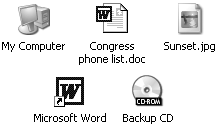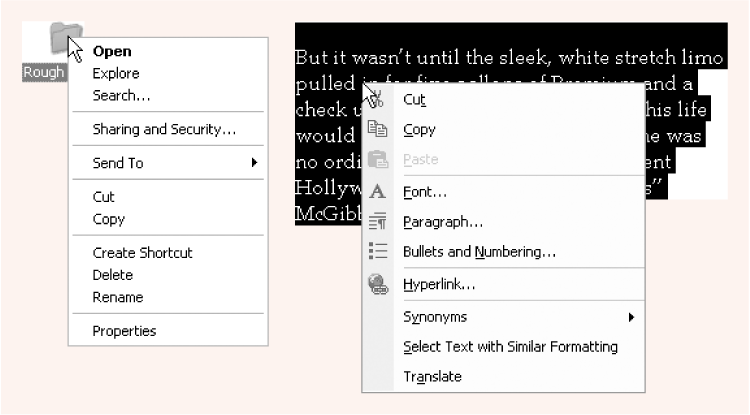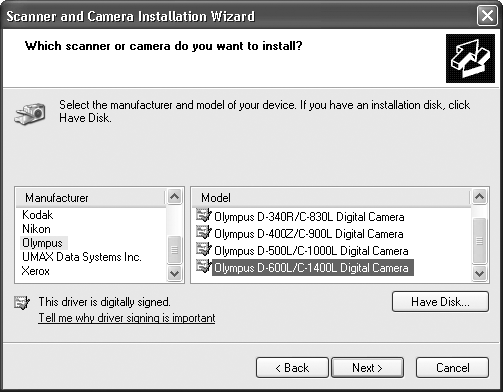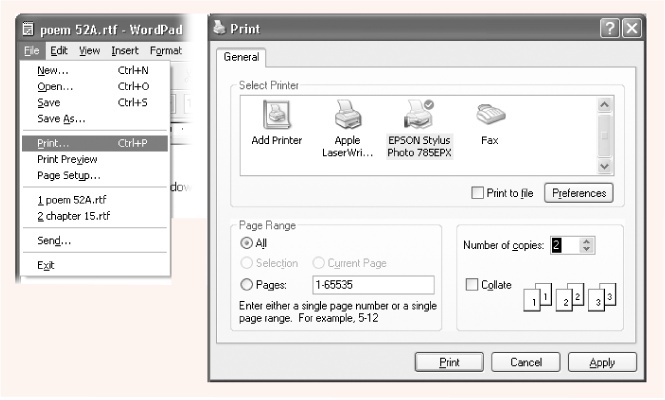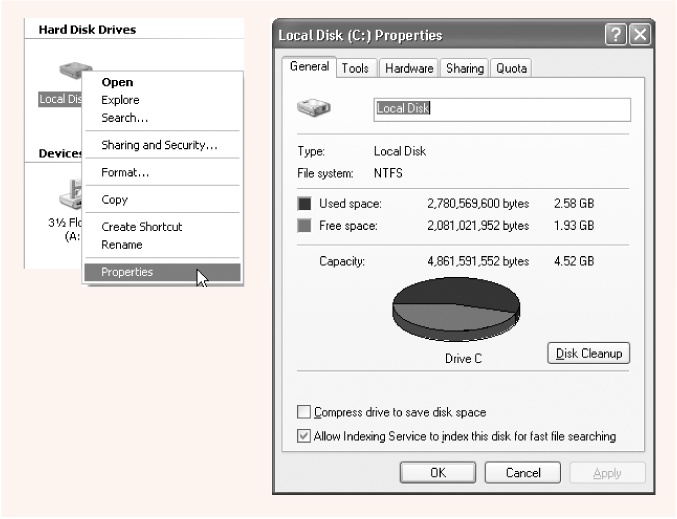Chapter 1. The Very Basics
If you’re new to windows, you’ve got to start with the fundamentals. Don’t worry—this chapter won’t make you memorize a bunch of jargon. Instead, it gives you a solid understanding of what Windows XP does and how to use it. In fact, even if you’re not so new to Windows, a little background information will help you feel at ease with the program you’re staring at on the screen.
Be prepared to encounter the following terms and concepts over and over again—in the built-in Windows help, in computer magazines, and in this book. Along the way, you’ll pick up some basic operating principles—like right-clicking and keyboard shortcuts—that will make every moment you spend at your PC more efficient and productive.
What Is Windows, Anyway?
Windows is an operating system, the software that controls your computer. It’s designed to serve you in several ways:
It’s a launching bay. At its heart, Windows is a home base, a remote-control clicker that lets you call up the various software programs (called applications in the trade) you use for work or play. When you get right down to it, applications are the real reason you bought a PC.
Windows XP is a well-stocked software pantry unto itself. As you’ll see later in this book, it comes with such basic programs as a Web browser, email program, simple word processor, and calculator. There’s even software to download, print, and edit photos from your digital camera and play music and movies on your PC.
If you’re like most people, sooner or later, you’ll buy and install more software. That’s one of the luxuries of using Windows: you can choose from a staggering number of add-on programs. Whether you’re a left-handed beekeeper or a German-speaking nun, some company somewhere is selling Windows software designed just for you, its target audience.
It’s a file cabinet. Every application on your machine, as well as every document you create, is represented on the screen by an icon (see Figure 1-1). You can organize these icons into little onscreen file folders. You can make backups (safety copies) by dragging file icons onto a floppy disk or blank CD, or send them to people by email. You can also trash icons you no longer need by dragging them onto the Recycle Bin icon.
It’s your equipment headquarters. What you can actually see of Windows is only the tip of the iceberg. An enormous chunk of Windows is behind-the-scenes plumbing that controls the various functions of your computer—its modem, screen, keyboard, printer, and so on.
Working Windows Smarter
The next few pages may well be the most important in this book. The coolest, most powerful PC on the planet can feel awkward and clunky if you’re using computer techniques you learned during the first Bush administration. Even if you have a favorite way of doing something, make this your mantra: never stop learning. There’s probably a way to do it better and faster in Windows XP. Fortunately, remembering just a few simple principles usually helps you find a better way every time.
The Right Mouse Button Is King
One of the most important features of Windows isn’t on the screen—it’s under your hand. The standard mouse has two mouse buttons. You use the left one to click buttons, highlight text, and drag things around on the screen.
When you click the right button, however, a shortcut menu appears onscreen, like the ones shown in Figure 1-2. Get into the habit of right-clicking things—icons, folders, disks, text in your word processor, buttons on your menu bar, pictures on a Web page, and so on. The commands that appear on the shortcut menu will make you much more productive and lead you to discover handy functions you never knew existed.
This is a big deal: Microsoft’s research suggests that nearly 75 percent of Windows users don’t use the right mouse button, and therefore miss hundreds of time-saving shortcuts. Part of the rationale behind Windows XP’s redesign is putting these functions out in the open. Even so, many more shortcuts remain hidden under your right mouse button.
Tip
Microsoft doesn’t discriminate against left-handers…much. You can swap the functions of the right and left mouse buttons easily enough. In the Control Panel window (Section 10.16), open the Mouse icon. When the Mouse Properties dialog box opens, click the Buttons tab, and turn on the “Switch primary and secondary buttons” checkbox. Then click OK. Windows now displays shortcut menus when you left-click.
Summon a Wizard
A wizard is a series of screens that walks you through the task you’re trying to complete. Wizards make configuration and installation tasks easier by breaking them down into smaller, more easily digested steps. Figure 1-3 offers an example.
There’s More Than One Way to Do Everything
No matter what setting you want to adjust, no matter what program you want to open, Microsoft has provided five or six different ways to do it. For example, here are the various ways to delete a file: press the Delete key, choose Delete from the File menu at the top of a window, drag the file icon onto the Recycle Bin, or right-click the file name and choose Delete from the shortcut menu.
Pessimists grumble that there are too many paths to every destination, making it much more difficult to learn Windows. Optimists point out that this abundance of approaches means that almost everyone will find, and settle on, a satisfying method for each task. Whenever you find a task irksome, remember you have other options.
You Can Use the Keyboard for Everything
In earlier versions of Windows, underlined letters appeared in the names of menus and dialog boxes. These underlines were clues for people who found it faster to do something by pressing keys than by using the mouse.
The underlines are hidden in Windows XP, at least in disk and folder windows (they still appear in your individual software programs). If you miss them, you have two options:
Make them come back full-time, using the control panel’s Display program (see Section 10.9).
Make them reappear only when you summon them—by pressing the Alt key, Tab key, or an arrow key whenever the menu bar is visible. (When operating menus, you can release the Alt key immediately after pressing it.) In this book, in help screens, and in computer magazines, you’ll see key combinations indicated like this: Alt+S (or Alt+ whatever the letter key is).
Once the underlines are visible, you can open a menu by pressing the underlined letter (F for the File menu, for example). Once the menu is open, press the underlined letter key that corresponds to the menu command you want. Or press Esc to close the menu without doing anything. (In Windows, the Esc key always means cancel or stop.)
Pressing the Windows logo key (next to the Alt key on most recent keyboards) opens the Start menu and turns on its little underlines. Microsoft assumed, logically enough, that if you’re enough of a keyboard lover to have opened the Start menu from the keyboard, you’re probably going to want to use the keyboard to trigger the commands in the Start menu, too.
If choosing a menu command opens a dialog box, you can trigger its options, too, by pressing Alt along with the underlined letters. (Within dialog boxes, you can’t press and release Alt; you have to hold it down while typing the underlined letter.) As you can see in Figure 1-4, it’s a rare task indeed that you can’t perform entirely from the keyboard.
Tip
The Enter key always does the same thing as clicking the highlighted button in a dialog box (the one with a shadowed border).
You Could Spend a Lifetime Changing Properties
You can’t write an operating system that’s all things to all people, but Microsoft has sure tried. You can change almost every aspect of the way Windows looks and works. You can replace the gray backdrop of the screen (the wallpaper) with your favorite photograph, change the typeface used for the names of your icons, or set up a particular program to launch automatically every time you turn on the PC.
When you want to change some general behavior of your PC, like how it connects to the Internet, how soon the screen goes black to save power, or how quickly a letter repeats when you hold down a key, you use the Control Panel window (see Chapter 10).
Many other times, however, you may want to adjust the settings of only one particular element of the machine, such as the hard drive, the Recycle Bin, or a particular application. In those cases, simply right-click the corresponding icon. In the resulting shortcut menu, you’ll often find a command called Properties. When you click it, a dialog box appears containing settings or information about that object, as shown in Figure 1-5.
It’s also worth getting to know how to operate tabbed dialog boxes, of which the Properties box is a fine example. These are windows that contain so many options, Microsoft has had to split them up into separate panels, or tabs. To reveal a new set of options, just click a different tab. (In Figure 1-5, these are called General, Tools, Hardware, Sharing, and Quota.) These tabs are designed to resemble the tabs at the top of file folders. You can switch tabs without using the mouse by pressing Ctrl+Tab (to “click” the next tab to the right) or Ctrl+Shift+Tab (for the previous tab).
Every Piece of Hardware Requires Software
When computer geeks talk about their drivers, they’re not talking about their chauffeurs (unless they’re Bill Gates); they’re talking about the controlling software required by every hardware component of a PC.
The driver is the translator between your PC’s brain and the equipment attached to it: mouse, keyboard, screen, CD-ROM drive, scanner, digital camera, palmtop, and so on. Without the correct driver software, the corresponding piece of equipment doesn’t work at all. Fortunately, Windows XP comes with drivers for over 12,000 components, saving you the trouble of scavenging for them on a disk or on the Internet.
When you buy one of these gadgets, you receive a CD containing the driver software. If the included driver software works fine, then great. If your gadget acts up, however, remember that equipment manufacturers regularly release improved (read: less buggy) versions of these software chunks. (You generally find such updates on the manufacturers’ Web sites.)
Get Windows XP for Starters: The Missing Manual now with the O’Reilly learning platform.
O’Reilly members experience books, live events, courses curated by job role, and more from O’Reilly and nearly 200 top publishers.
